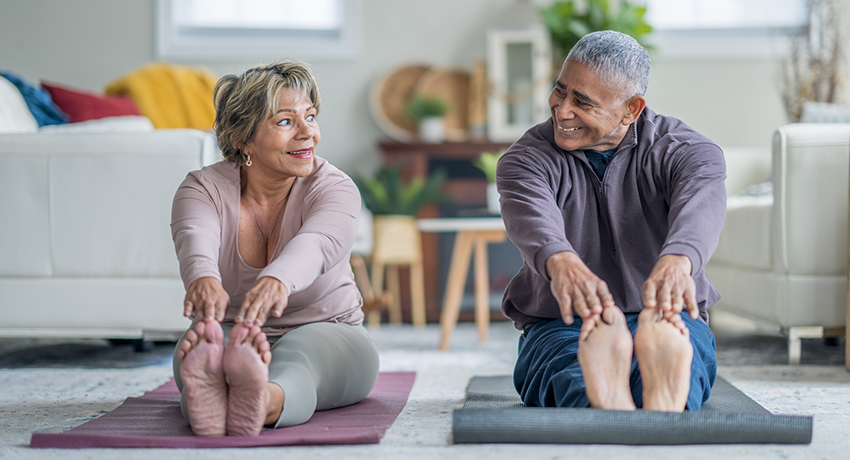Staying active becomes increasingly important for overall health and longevity as we age. The benefits are compelling, including improved mobility, mental health, and overall well-being. This can be challenging, however, for older adults with arthritis or joint pain.

Nathan B. Rogers, MD, orthopedic surgeon with UT Physicians Orthopedics – Cypress, said multiple studies have shown that even with arthritic conditions, those who increase lower extremity strength can decrease pain and increase function. Most importantly, it’s never too late to begin.
“Ideally, you should start when you’re younger and maintain health and fitness into your later years,” said Rogers. “However, research has shown there are significant benefits from doing even gentle exercises well into your 70s, 80s, and even 90s.”
Moving despite limited mobility
For those with limited mobility, such as individuals with arthritis, maintaining activity is still crucial, as stiffness can result from both arthritis and inactivity.
“When you add arthritic conditions that tend to make people more sedentary, you have the pain from the arthritis itself and the pain from the weakness,” said Rogers, an assistant professor with McGovern Medical School at UTHealth Houston. “People think, ‘Oh, I have arthritis; I shouldn’t move,’ but it’s the exact opposite. Motion is joint lotion.”
Simple bodyweight exercises and flexibility routines can help keep joints mobile and reduce stiffness. Chair yoga and other seated exercises are excellent options for those with severe mobility restrictions.
One of the biggest challenges in any exercise routine is maintaining motivation. Rogers believes education is key. He spends significant time educating his patients on the benefits of movement, even for those with arthritis.

Exercises for older adults with arthritis
Here are a few exercise options older adults can do at home:
Bodyweight exercises
Rogers strongly believes in the knee conditioning program by the American Academy of Orthopedic Surgeons and shares it with all his patients. These exercises utilize your body weight (except for one) and focus on individual muscle exercises such as quad strengthening, calf strengthening, hamstrings, and more.
“Maintenance of muscle mass correlates to strength and is important in maintaining a functional lifestyle, especially as we age,” Rogers said. “It helps with glucose regulation, diabetes management, and supports cardiovascular health by improving blood pressure and general well-being.”
“Studies have looked at high-intensity and low-intensity exercise regimens with older adults, and it really doesn’t make a difference,” Rogers said. “Any resistance training, whether with weights on the machine or body weight, gives an improvement in symptoms and an improvement in function.”
Balance exercises
Balance exercises are easy to do at home and can help prevent falls and improve stability for older adults.
To work on balance, stand behind a chair and hold onto the back for support. Lift one foot off the ground and hold the position for 10-15 seconds. Switch to the other foot and repeat. Pair this balance exercise as you brush your teeth to ensure it’s part of your daily routine.
Flexibility exercises
Rogers said many of his patients have mild arthritic changes and are stiff. He uses a metaphor of a three- or four-hour car ride and getting out to pump gas. You can get up, but you’re stiff, achy, and have to stretch a bit. He said to imagine doing that for extended periods, which is what you’re doing to your joints when you’re sedentary.
“Taking the joints through a range of motion and working on flexibility is beneficial for all older adults, but more so for those with arthritis,” Rogers said.
Gentle neck, shoulders, back, and legs stretches can help with tight muscles.
Cardio exercises
Cardiovascular exercise and resistance training are both important and go hand in hand, Rogers said. He emphasizes to patients that a truly balanced workout regimen is both resistance training and cardio.
Older adults can make modifications as they focus on cardio health:
- Walk around your home or in place to gain some essential movement.
- Do chair aerobics – sit in a sturdy chair and do arm circles, leg lifts, and marching in place.
- Dance around the living room or kitchen to your favorite music. This can improve your mood and provide an accelerated heart rate at the same time.
“Making exercise part of daily life can go a long way toward your overall health in the future,” Rogers said.


